Search Result
Results for "
vasodilation
" in MedChemExpress (MCE) Product Catalog:
1
Biochemical Assay Reagents
5
Isotope-Labeled Compounds
| Cat. No. |
Product Name |
Target |
Research Areas |
Chemical Structure |
-
- HY-16693
-
|
|
Others
|
Others
|
|
LDN-27219 is a reversible, slow-binding inhibitor of TGase. LDN-27219 inhibits human TGase with an IC50 value of 0.6 μM. LDN-27219 effectively decreases blood pressure and induces vasodilation, it can be used for the research of cardiovascular disease .
|
-
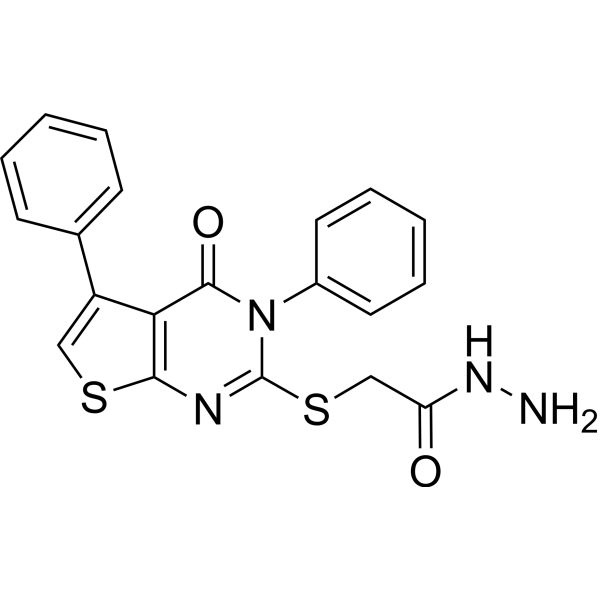
-
- HY-B0131
-
|
Alprostadil; PGE1
|
Prostaglandin Receptor
Endogenous Metabolite
|
Cardiovascular Disease
Endocrinology
Cancer
|
|
Prostaglandin E1 (Alprostadil) is a prostanoid receptor ligand, with Kis of 1.1 nM, 2.1 nM, 10 nM, 33 nM and 36 nM for mouse EP3, EP4, EP2, IP and EP1, respectively. Prostaglandin E1 induces vasodilation and inhibits platelet aggregation. Prostaglandin E1 can be used as a vasodilator for the research of peripheral vascular diseases .
|
-
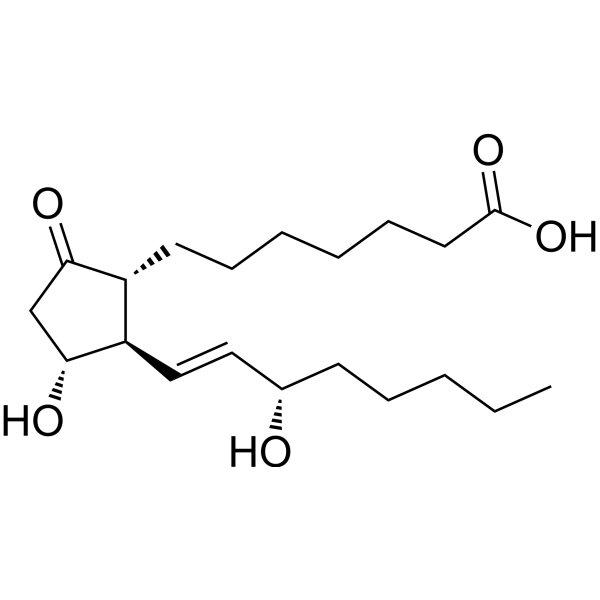
-
- HY-12403A
-
|
TXA127 acetate; Angiotensin (1-7) (acetate); Ang-(1-7) (acetate)
|
Angiotensin Receptor
Angiotensin-converting Enzyme (ACE)
Endogenous Metabolite
|
Cardiovascular Disease
Inflammation/Immunology
Endocrinology
|
|
Angiotensin 1-7 (Ang-(1-7)) acetate is an endogenous heptapeptide from the renin-angiotensin system (RAS) with a cardioprotective role due to its anti-inflammatory and anti-fibrotic activities in cardiac cells. Angiotensin 1-7 acetate inhibits purified canine ACE activity (IC50=0.65 μM). Angiotensin 1-7 acetate acts as a local synergistic modulator of kinin-induced vasodilation by inhibiting ACE and releasing nitric oxide. Angiotensin 1-7 acetate blocks Ang II-induced smooth muscle cell proliferation and hypertrophy and shows antiangiogenic and growth-inhibitory effects on the endothelium .
|
-
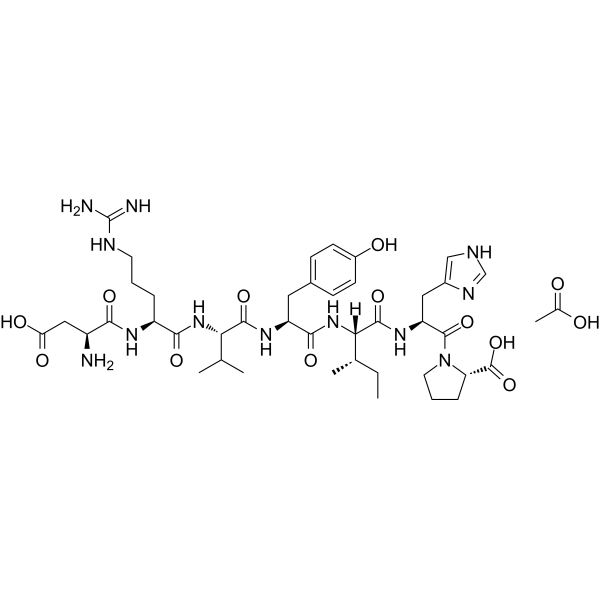
-
- HY-105651A
-
|
|
Others
|
Cardiovascular Disease
|
|
Butalamine (hydrochloride) is a peripheral vasodilator with local anesthetic effects. :Butalamine (hydrochloride) can produce in animals coronary vasodilation, local anaesthesia, analgesia and a papaverine like action in duodenal preparations. Butalamine (hydrochloride) causes a slowing in rate of spontaneous activity, a decrease in amplitude and a reduction in isolated human smooth muscle .
|
-

-
- HY-14744
-
|
(S)-Amlodipine; Levoamlodipine
|
Calcium Channel
|
Others
|
|
Levamlodipine ((S)-Amlodipine) is a powerful dihydropyridine calcium channel blocker, possessing vasodilation properties and used in the treatment of hypertension and angina .
|
-
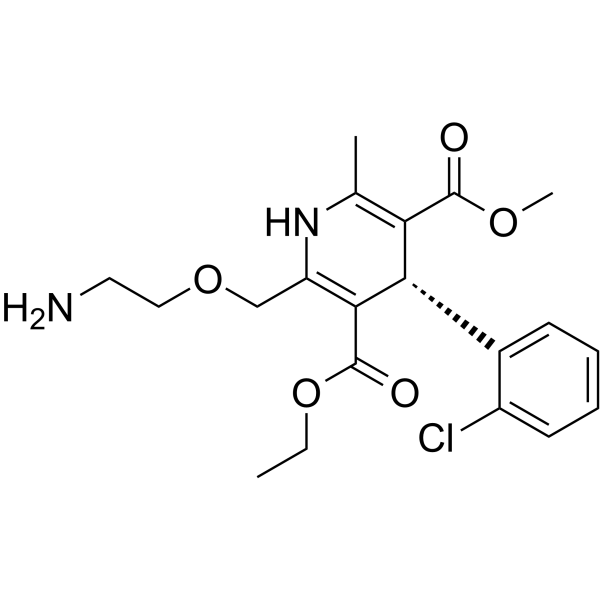
-
- HY-P1534
-
-

-
- HY-14744A
-
|
(S)-Amlodipine besylate; Levoamlodipine besylate
|
Calcium Channel
|
Cardiovascular Disease
|
|
Levamlodipine besylate ((S)-Amlodipine besylate) is a powerful dihydropyridine calcium channel blocker, possessing vasodilation properties and used in the treatment of hypertension and angina .
|
-
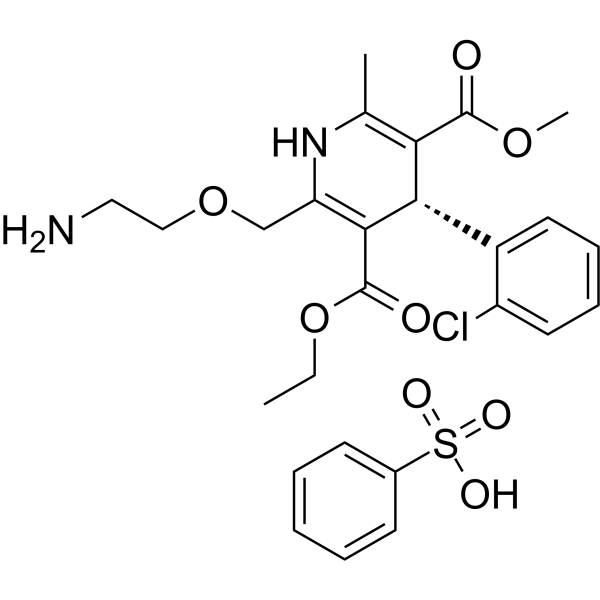
-
- HY-P1766
-
|
|
CGRP Receptor
|
Cardiovascular Disease
|
|
Adrenomedullin (11-50), rat is the C-terminal fragment (11-50) of rat adrenomedullin. Rat adrenomedullin induces a selective arterial vasodilation via CGRP1 receptors .
|
-
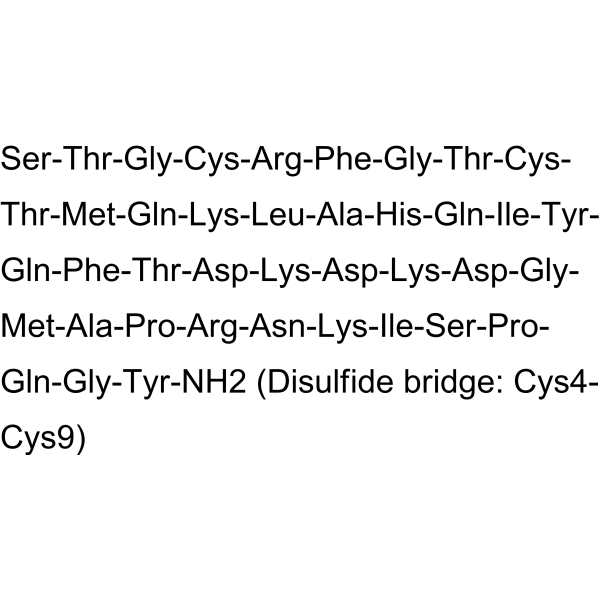
-
- HY-137117
-
|
15-keto Prostaglandin E1
|
Drug Metabolite
|
Others
|
|
15-keto-PGE1 is an inactive Prostaglandin E1 (PGE1) metabolite. Prostaglandin E1 induces vasodilation and inhibits platelet aggregation .
|
-
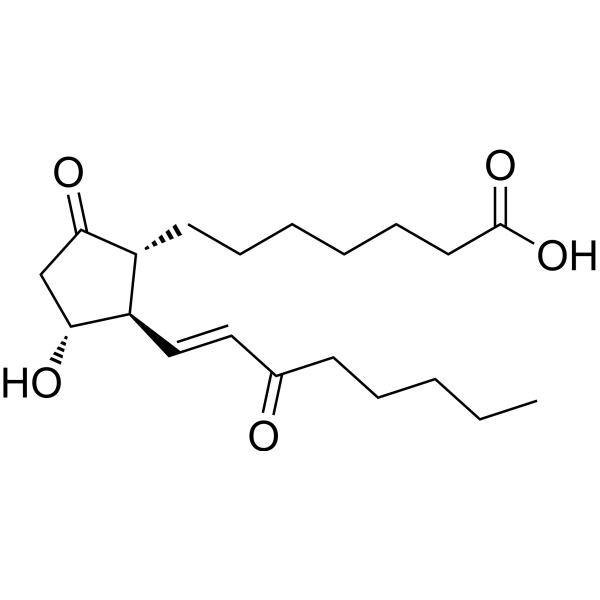
-
- HY-118094
-
-
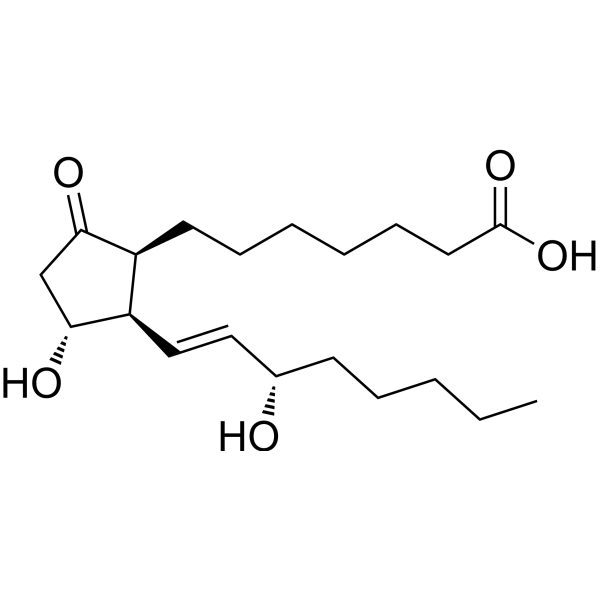
-
- HY-14744S
-
|
(S)-Amlodipine-d4; Levoamlodipine-d4
|
Isotope-Labeled Compounds
Calcium Channel
|
Others
|
|
Levamlodipine-d4 is the deuterium labeled Levamlodipine. Levamlodipine ((S)-Amlodipine) is a powerful dihydropyridine calcium channel blocker, possessing vasodilation properties and used in the treatment of hypertension and angina[1].
|
-

-
- HY-W011690
-
-
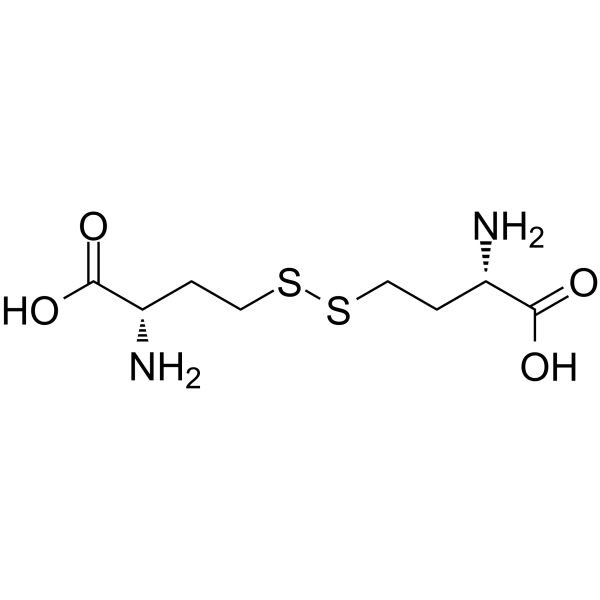
-
- HY-15472
-
|
|
5-HT Receptor
|
Cardiovascular Disease
|
|
PRX-08066 is a selective 5-hydroxytryptamine receptor 2B (5-HT2BR, IC50= 3.4 nM) antagonist that causes selective vasodilation of pulmonary arteries.
|
-
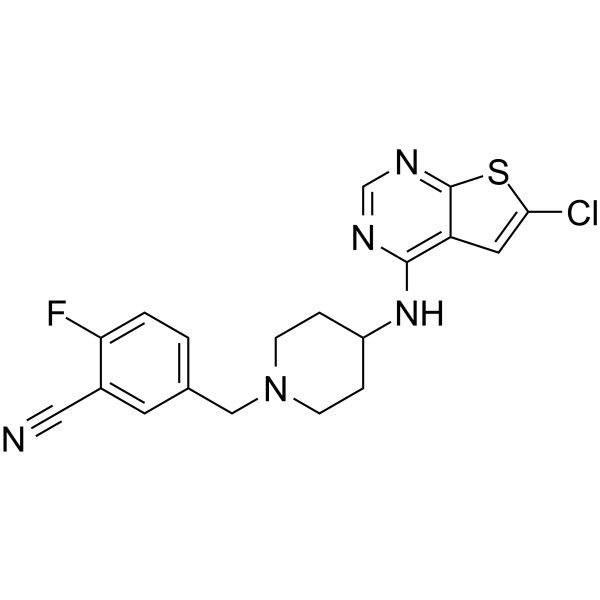
-
- HY-15472A
-
|
|
5-HT Receptor
|
Cardiovascular Disease
|
|
PRX-08066 is a selective 5-hydroxytryptamine receptor 2B (5-HT2BR, IC50= 3.4 nM) antagonist that causes selective vasodilation of pulmonary arteries.
|
-

-
- HY-112197
-
|
|
PKG
|
Cardiovascular Disease
|
|
PKG agent G1 targets C42 of PKG Iα. PKG agent G1 can couple to vasodilation and blood pressure lowering by a C42 PKG Iα-independent mechanism.
|
-
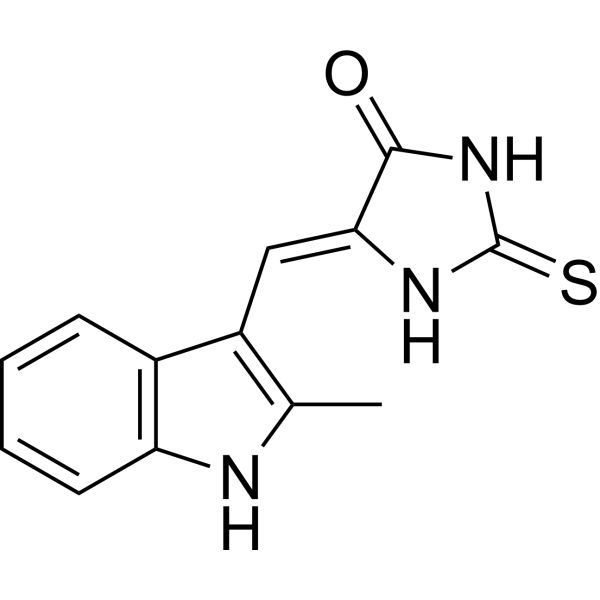
-
- HY-B0112
-
|
U10858
|
Potassium Channel
Endogenous Metabolite
|
Cardiovascular Disease
Cancer
|
|
Minoxidil (U10858) is an ATP-sensitive potassium (KATP) channel opener, a potent oral antihypertensive agent and a peripheral vasodilator that promotes vasodilation also affects hair growth. Minoxidil is also a potent inhibitor of soybean lipoxygenaseare with an IC50 of 20 μM .
|
-

-
- HY-123638
-
|
|
Others
|
Inflammation/Immunology
|
|
6-hydroxykaempferol 3,6,7-tri-O-β-D-glucoside is a bio-active flavonoid from Carthamus tinctorius with antioxidant capacities in vitro .
|
-
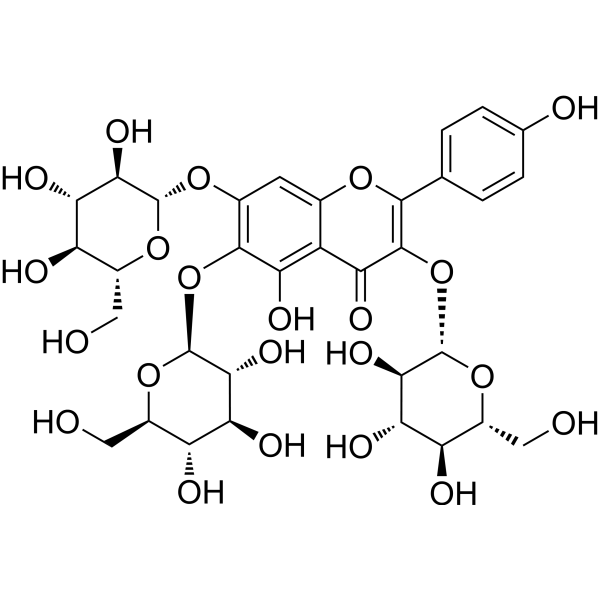
-
- HY-155475
-
|
|
mTOR
|
Cardiovascular Disease
|
|
mTORC1-IN-2 (compound H3) is a NO donor compound that alleviates vasodilation and attenuates myocardial hypoxic injury. mTORC1-IN-2 upregulates TSC2-P expression and inhibits mTORC1 expression .
|
-
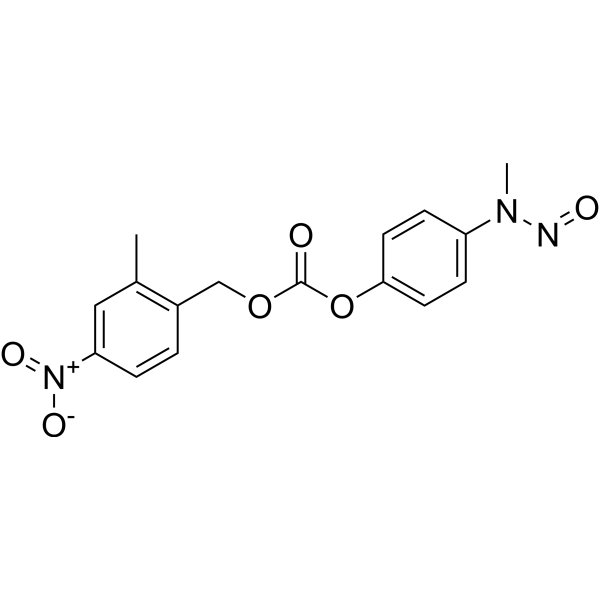
-
- HY-W011690S
-
|
|
Endogenous Metabolite
|
|
|
L-Homocystine-d8 is the deuterium labeled L-Homocystine. L-Homocystine is the oxidized member of the L-homocysteine. Homocysteine is a pro-thrombotic factor, vasodilation impairing agent, pro-inflammatory factor and endoplasmatic reticulum-stress inducer used to study cardiovascular disease mechanisms.
|
-
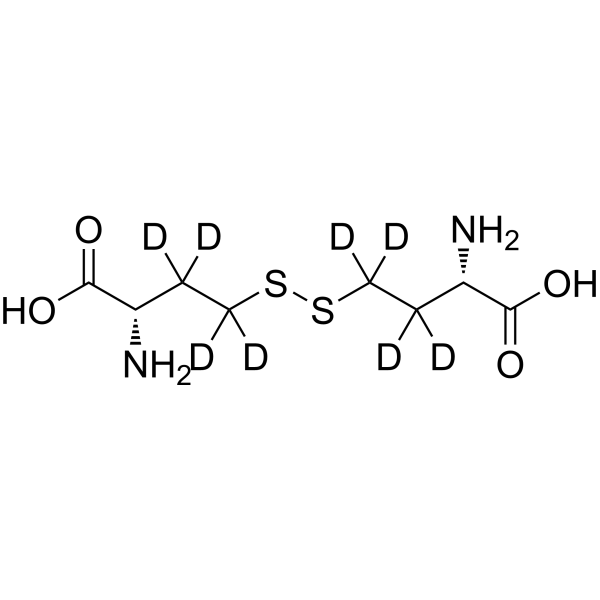
-
- HY-P3841
-
|
|
PKC
|
Others
|
|
Protein Kinase C β Peptide is a peptide fragment of Protein Kinase Cβ. Protein Kinase Cβ is related with hyperglycemia decreases endothelium-derived nitric oxide. Inhibition of Protein kinase Cβ prevents the reduction in endothelium-dependent vasodilation induced by acute hyperglycemia .
|
-

-
- HY-113469B
-
|
|
Others
|
Cancer
|
|
Cyclic GMP TBAOH is a tetra-n-butylammonium hydroxide (TBAOH) form of Cyclic GMP (HY-12512). Cyclic GMP is an endogenous second messenger that regulates a variety of cellular processes including apoptosis, vasodilation, and neurotransmission through the activation of signaling pathways such as Protein Kinase G in cells .
|
-
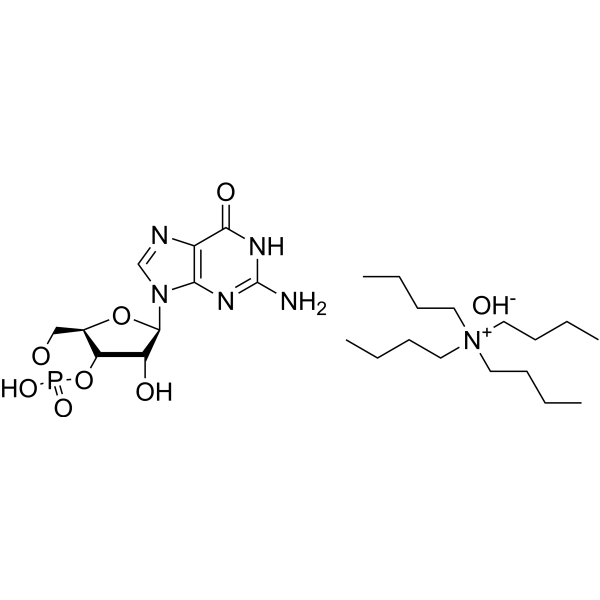
-
- HY-120514
-
|
|
TRP Channel
Potassium Channel
|
Cardiovascular Disease
|
|
JNc-440 is a potent antihypertensive agent. JNc-440 can enhance the interaction of TRPV4 and Ca 2+-activated potassium channel 3 (KCa2.3) in endothelial cells. JNc-440 can also enhance vasodilation, and exerted antihypertensive effects in mice .
|
-
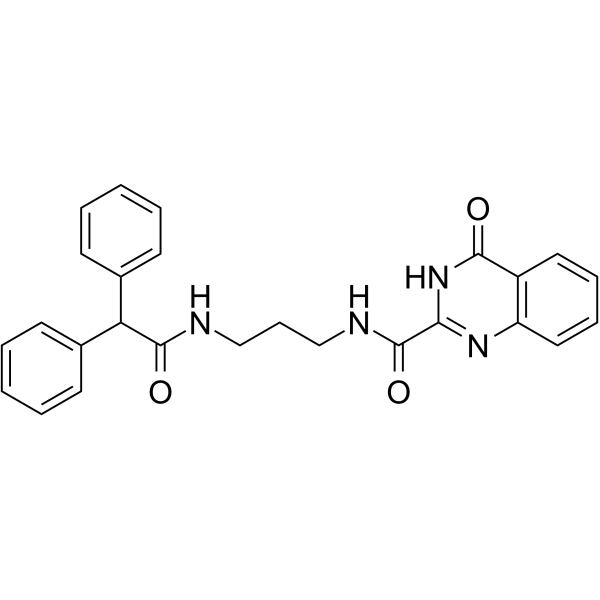
-
- HY-P0012A
-
|
Vasoactive Intestinal Peptide acetate salt (human, rat, mouse, rabbit, canine, porcine)
|
SARS-CoV
|
Infection
Inflammation/Immunology
|
|
Aviptadil acetate is an analog vasoactive intestinal polypeptide (VIP) with potent vasodilatory effects. Aviptadil acetate induces pulmonary vasodilation and inhibits vascular SMCs proliferation, platelet aggregation. Aviptadil acetate can be used for the research of pulmonary fibrosis, pulmonary arterial hypertension (PAH) and SARS-CoV-2 caused respiratory failure, et al .
|
-

-
- HY-P0012
-
|
Vasoactive Intestinal Peptide (human, rat, mouse, rabbit, canine, porcine)
|
SARS-CoV
|
Infection
Inflammation/Immunology
|
|
Aviptadil is an analog vasoactive intestinal polypeptide (VIP) with potent vasodilatory effects. Aviptadil induces pulmonary vasodilation and inhibits vascular SMCs proliferation, platelet aggregation. Aviptadil can be used for the research of pulmonary fibrosis, pulmonary arterial hypertension (PAH) and SARS-CoV-2 caused respiratory failure, et al .
|
-

-
- HY-23196S
-
|
|
Potassium Channel
|
|
|
Minoxidil-d10 (U10858-d10) is the deuterium labeled Minoxidil. Minoxidil (U10858) is an ATP-sensitive potassium (KATP) channel opener, a potent oral antihypertensive agent and a peripheral vasodilator that promotes vasodilation also affects hair growth. Minoxidil is also a potent inhibitor of soybean lipoxygenaseare with an IC50 of 20 μM[1][2][3].
|
-

-
- HY-N2409
-
|
|
Apoptosis
EGFR
JAK
STAT
|
Cardiovascular Disease
Cancer
|
|
Delphinidin chloride is an anthocyanin isolated from berries and red wine. Delphinidin chloride exhibits endothelium-dependent vasodilation and anticancer activity. Delphinidin chloride also modulates JAK/STAT3 and MAPK signaling, thereby inducing apoptosis in HCT116 cells. Delphinidin chloride is also a potent inhibitor of EGFR (IC50: 1.3 μM), shutting down downstream signaling cascades .
|
-
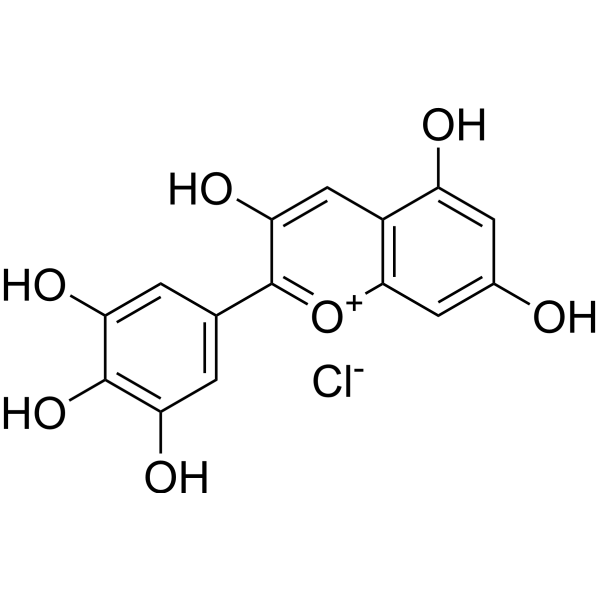
-
- HY-B0131S2
-
-
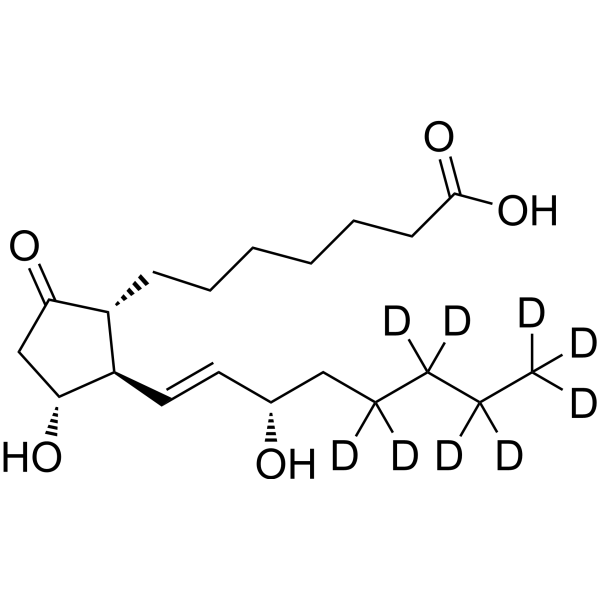
-
- HY-N6652
-
|
Uracil 1-β-D-arabinofuranoside
|
Others
|
Cardiovascular Disease
Inflammation/Immunology
Cancer
|
|
1-beta-D-Arabinofuranosyluracil (Uracil 1-β-D-arabinofuranoside) isolated from the Caribbean sponge Tectitethya crypta, is a methoxyadenosine derivative. 1-beta-D-Arabinofuranosyluracil has demonstrated a diverse bioactivity profile including anti-inflammatory activity, analgesic and vasodilation properties . 1-beta-D-Arabinofuranosyluracil reduces a proliferation of mouse lymphoma cells .
|
-
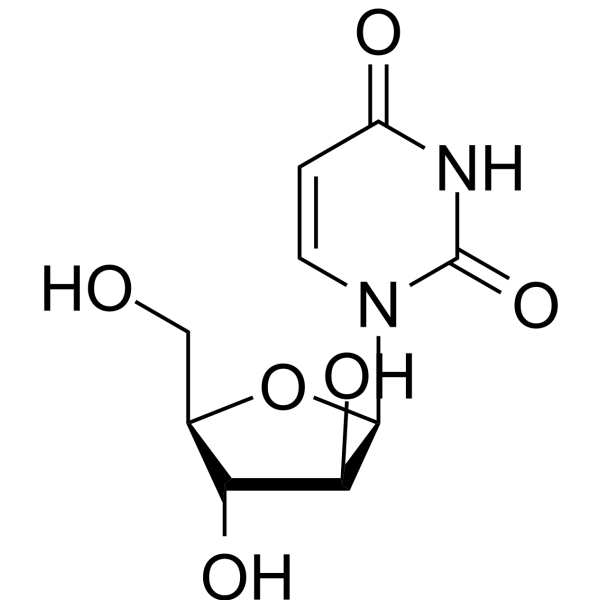
-
- HY-W250310
-
|
L-Arginine alpha-ketoglutarate
|
Biochemical Assay Reagents
|
Others
|
|
L-Arginine α-ketoglutarate, often abbreviated as AAKG, is a dietary supplement that combines arginine L-Arginine and α-ketoglutarate, a key intermediate in the Krebs cycle. L-arginine is a precursor of nitric oxide, which regulates blood flow and promotes vasodilation, while α-ketoglutarate is involved in energy production and protein synthesis. Together, these compounds are thought to support improved muscle recovery, increased endurance, and enhanced athletic performance.
|
-
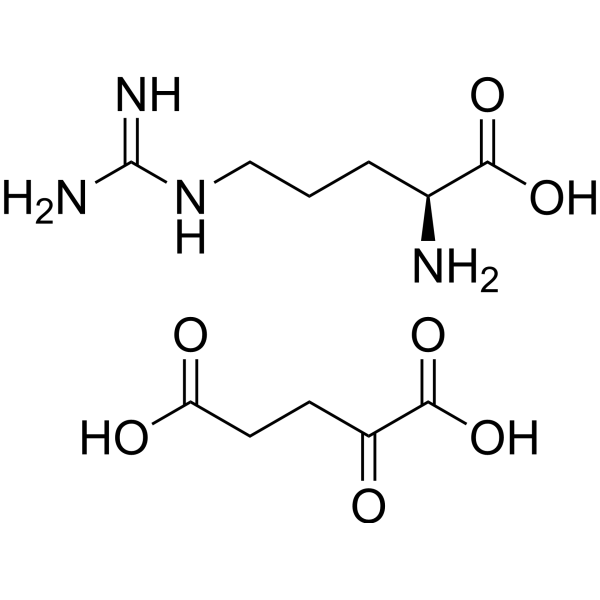
-
- HY-130345
-
|
|
Platelet-activating Factor Receptor (PAFR)
|
Cardiovascular Disease
|
|
C18-PAF, octadecane PAF, is the ligand of platelet-activating factor and PAF G protein-coupled receptor (PAFR). C18-PAF has renovasodilator properties and antihypertensive lipid properties. C18-PAF increases renal blood flow and causes dose-dependent systemic hypotension .
|
-
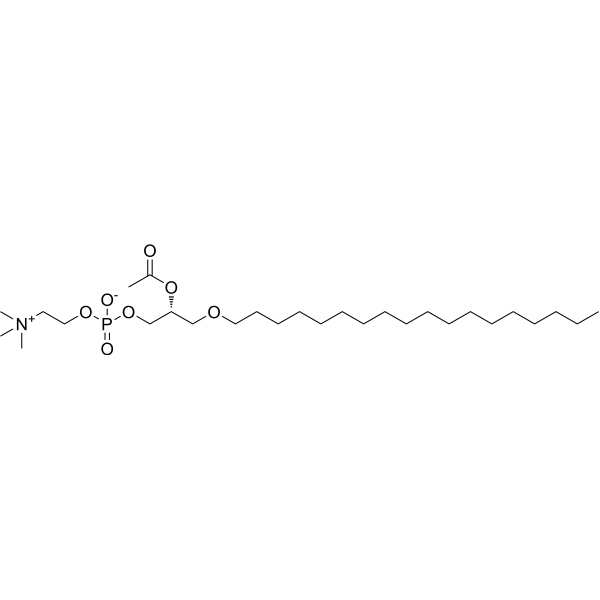
-
- HY-B0131S
-
|
|
Prostaglandin Receptor
Endogenous Metabolite
|
Cardiovascular Disease
Endocrinology
|
|
Prostaglandin E1-d4 is the deuterium labeled Prostaglandin E1. Prostaglandin E1 (Alprostadil) is a prostanoid receptor ligand, with Kis of 1.1 nM, 2.1 nM, 10 nM, 33 nM and 36 nM for mouse EP3, EP4, EP2, IP and EP1, respectively. Prostaglandin E1 induces vasodilation and inhibits platelet aggregation. Prostaglandin E1 can be used as a vasodilator for the research of peripheral vascular diseases[1][2][3].
|
-
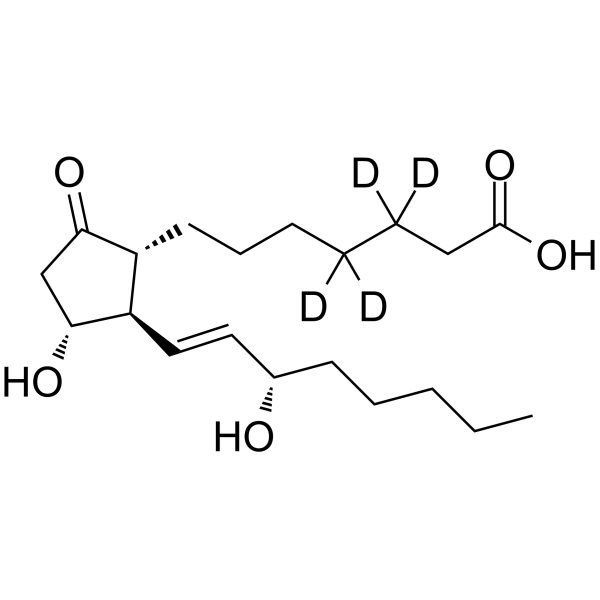
-
- HY-B0131R
-
|
Alprostadil(Standard); PGE1 (Standard)
|
Prostaglandin Receptor
Endogenous Metabolite
|
Cardiovascular Disease
Endocrinology
Cancer
|
|
Prostaglandin E1 (Standard) is the analytical standard of Prostaglandin E1. This product is intended for research and analytical applications. Prostaglandin E1 (Alprostadil) is a prostanoid receptor ligand, with Kis of 1.1 nM, 2.1 nM, 10 nM, 33 nM and 36 nM for mouse EP3, EP4, EP2, IP and EP1, respectively. Prostaglandin E1 induces vasodilation and inhibits platelet aggregation. Prostaglandin E1 can be used as a vasodilator for the research of peripheral vascular diseases .
|
-
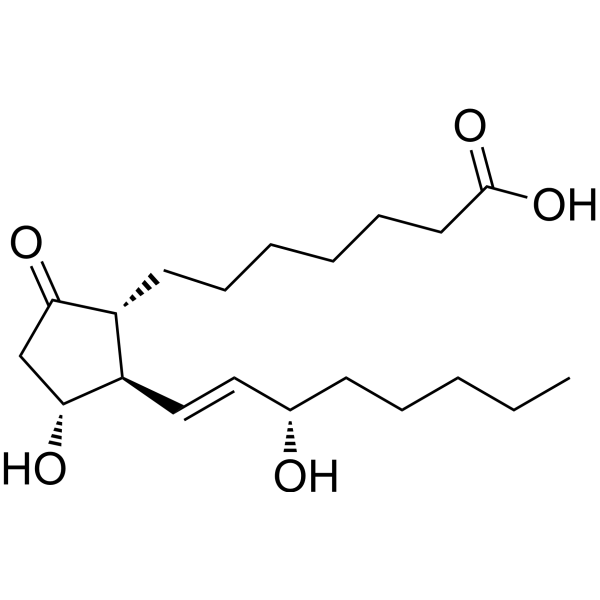
-
- HY-121354
-
|
|
Others
|
Cardiovascular Disease
|
|
Hydracarbazine is a pyridazine. Hydracarbazine can effectively lower blood pressure, it can be used for the research of high blood pressure .
|
-
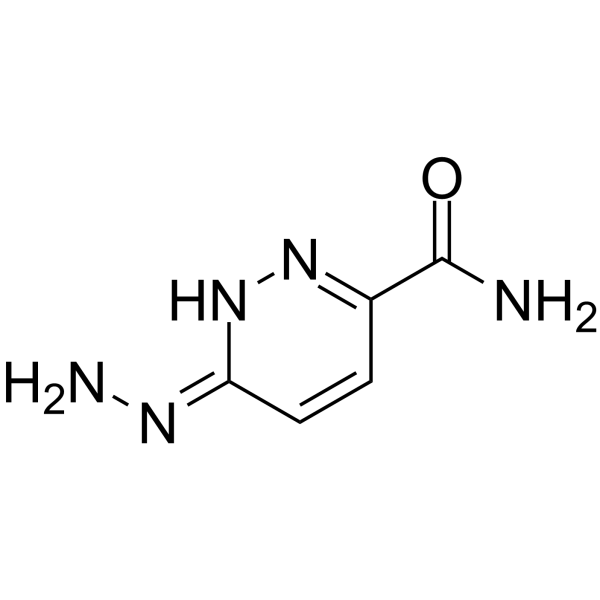
-
- HY-B0660
-
|
EPA; Timnodonic acid
|
Endogenous Metabolite
Histone Demethylase
|
Neurological Disease
Cancer
|
|
Eicosapentaenoic Acid (EPA) is an orally active Omega-3 long-chain polyunsaturated fatty acid (ω-3 LC-PUFA). Eicosapentaenoic Acid exhibits a DNA demethylating action that promotes the re-expression of the tumor suppressor gene CCAAT/enhancer-binding protein δ (C/EBPδ). Eicosapentaenoic Acid activates RAS/ERK/C/EBPβ pathway through H-Ras intron 1 CpG island demethylation in U937 leukemia cells. Eicosapentaenoic Acid can promote relaxation of vascular smooth muscle cells and vasodilation .
|
-

-
- HY-W011269
-
|
EPA sodium; Timnodonic acid sodium
|
Endogenous Metabolite
Histone Demethylase
|
Cardiovascular Disease
Metabolic Disease
|
|
Eicosapentaenoic Acid (EPA)sodium is an orally active Omega-3 long-chain polyunsaturated fatty acid (ω-3 LC-PUFA). Eicosapentaenoic Acid sodium exhibits a DNA demethylating action that promotes the re-expression of the tumor suppressor gene CCAAT/enhancer-binding protein δ (C/EBPδ). Eicosapentaenoic Acid sodium activates RAS/ERK/C/EBPβ pathway through H-Ras intron 1 CpG island demethylation in U937 leukemia cells. Eicosapentaenoic Acid sodium can promote relaxation of vascular smooth muscle cells and vasodilation .
|
-

-
- HY-N4267
-
|
|
Calcium Channel
|
Infection
Cardiovascular Disease
|
|
Yangambin, a furofuran lignan, is already isolated from plants such as member of the Annonaceae family, including species of the genus Rollinia: R. pickeli, R. exalbidaand R. mucosa, as well from the Magnolia biondii. Yangambin, a selective PAF receptor antagonist, inhibits Ca 2+ influx through voltage-gated Ca 2+ channels, leading to the reduction in [Ca 2+]i in vascular smooth muscle cells and consequent peripheral vasodilation . Yangambin exhibits the antiallergic activity against β-hexosaminidase release with an IC50 of 33.8 μM and for anti-inflammatory activity with an IC50 of 37.4 μM .
|
-

-
- HY-12403
-
|
TXA127; Angiotensin (1-7); Ang-(1-7)
|
Angiotensin Receptor
Angiotensin-converting Enzyme (ACE)
Endogenous Metabolite
|
Cardiovascular Disease
Inflammation/Immunology
Endocrinology
|
|
Angiotensin 1-7 (Ang-(1-7)) is an endogenous heptapeptide from the renin-angiotensin system (RAS) with a cardioprotective role due to its anti-inflammatory and anti-fibrotic activities in cardiac cells. Angiotensin 1-7 inhibits purified canine ACE activity (IC50=0.65 μM). Angiotensin 1-7 acts as a local synergistic modulator of kinin-induced vasodilation by inhibiting ACE and releasing nitric oxide. Angiotensin 1-7 blocks Ang II-induced smooth muscle cell proliferation and hypertrophy and shows antiangiogenic and growth-inhibitory effects on the endothelium. Angiotensin 1-7 shows anti-inflammatory activity .
|
-

| Cat. No. |
Product Name |
Type |
-
- HY-W250310
-
|
L-Arginine alpha-ketoglutarate
|
Biochemical Assay Reagents
|
|
L-Arginine α-ketoglutarate, often abbreviated as AAKG, is a dietary supplement that combines arginine L-Arginine and α-ketoglutarate, a key intermediate in the Krebs cycle. L-arginine is a precursor of nitric oxide, which regulates blood flow and promotes vasodilation, while α-ketoglutarate is involved in energy production and protein synthesis. Together, these compounds are thought to support improved muscle recovery, increased endurance, and enhanced athletic performance.
|
| Cat. No. |
Product Name |
Target |
Research Area |
-
- HY-12403A
-
|
TXA127 acetate; Angiotensin (1-7) (acetate); Ang-(1-7) (acetate)
|
Angiotensin Receptor
Angiotensin-converting Enzyme (ACE)
Endogenous Metabolite
|
Cardiovascular Disease
Inflammation/Immunology
Endocrinology
|
|
Angiotensin 1-7 (Ang-(1-7)) acetate is an endogenous heptapeptide from the renin-angiotensin system (RAS) with a cardioprotective role due to its anti-inflammatory and anti-fibrotic activities in cardiac cells. Angiotensin 1-7 acetate inhibits purified canine ACE activity (IC50=0.65 μM). Angiotensin 1-7 acetate acts as a local synergistic modulator of kinin-induced vasodilation by inhibiting ACE and releasing nitric oxide. Angiotensin 1-7 acetate blocks Ang II-induced smooth muscle cell proliferation and hypertrophy and shows antiangiogenic and growth-inhibitory effects on the endothelium .
|
-
- HY-P1534
-
-
- HY-P1766
-
|
|
CGRP Receptor
|
Cardiovascular Disease
|
|
Adrenomedullin (11-50), rat is the C-terminal fragment (11-50) of rat adrenomedullin. Rat adrenomedullin induces a selective arterial vasodilation via CGRP1 receptors .
|
-
- HY-P4766
-
|
|
Peptides
|
Cardiovascular Disease
|
|
Adrenomedullin (porcine) is a peptide that regulates vasodilation. Adrenomedullin (porcine) induces endothelium-dependent relaxation in rat aorta with IC50 value of 2.4 nM. Adrenomedullin (porcine) induces endothelium-independent relaxation of porcine coronary arteries with an IC50 of 27.6 nM .
|
-
- HY-P3841
-
|
|
PKC
|
Others
|
|
Protein Kinase C β Peptide is a peptide fragment of Protein Kinase Cβ. Protein Kinase Cβ is related with hyperglycemia decreases endothelium-derived nitric oxide. Inhibition of Protein kinase Cβ prevents the reduction in endothelium-dependent vasodilation induced by acute hyperglycemia .
|
-
- HY-P0012A
-
|
Vasoactive Intestinal Peptide acetate salt (human, rat, mouse, rabbit, canine, porcine)
|
SARS-CoV
|
Infection
Inflammation/Immunology
|
|
Aviptadil acetate is an analog vasoactive intestinal polypeptide (VIP) with potent vasodilatory effects. Aviptadil acetate induces pulmonary vasodilation and inhibits vascular SMCs proliferation, platelet aggregation. Aviptadil acetate can be used for the research of pulmonary fibrosis, pulmonary arterial hypertension (PAH) and SARS-CoV-2 caused respiratory failure, et al .
|
-
- HY-P0012
-
|
Vasoactive Intestinal Peptide (human, rat, mouse, rabbit, canine, porcine)
|
SARS-CoV
|
Infection
Inflammation/Immunology
|
|
Aviptadil is an analog vasoactive intestinal polypeptide (VIP) with potent vasodilatory effects. Aviptadil induces pulmonary vasodilation and inhibits vascular SMCs proliferation, platelet aggregation. Aviptadil can be used for the research of pulmonary fibrosis, pulmonary arterial hypertension (PAH) and SARS-CoV-2 caused respiratory failure, et al .
|
-
- HY-12403
-
Talfirastide
Maximum Cited Publications
9 Publications Verification
TXA127; Angiotensin (1-7); Ang-(1-7)
|
Angiotensin Receptor
Angiotensin-converting Enzyme (ACE)
Endogenous Metabolite
|
Cardiovascular Disease
Inflammation/Immunology
Endocrinology
|
|
Angiotensin 1-7 (Ang-(1-7)) is an endogenous heptapeptide from the renin-angiotensin system (RAS) with a cardioprotective role due to its anti-inflammatory and anti-fibrotic activities in cardiac cells. Angiotensin 1-7 inhibits purified canine ACE activity (IC50=0.65 μM). Angiotensin 1-7 acts as a local synergistic modulator of kinin-induced vasodilation by inhibiting ACE and releasing nitric oxide. Angiotensin 1-7 blocks Ang II-induced smooth muscle cell proliferation and hypertrophy and shows antiangiogenic and growth-inhibitory effects on the endothelium. Angiotensin 1-7 shows anti-inflammatory activity .
|
| Cat. No. |
Product Name |
Category |
Target |
Chemical Structure |
-
- HY-B0131
-
|
Alprostadil; PGE1
|
Cardiovascular Disease
Structural Classification
Classification of Application Fields
Ketones, Aldehydes, Acids
Source classification
Endogenous metabolite
Disease Research Fields
|
Prostaglandin Receptor
Endogenous Metabolite
|
|
Prostaglandin E1 (Alprostadil) is a prostanoid receptor ligand, with Kis of 1.1 nM, 2.1 nM, 10 nM, 33 nM and 36 nM for mouse EP3, EP4, EP2, IP and EP1, respectively. Prostaglandin E1 induces vasodilation and inhibits platelet aggregation. Prostaglandin E1 can be used as a vasodilator for the research of peripheral vascular diseases .
|
-

-
- HY-12403A
-
-

-
- HY-W011690
-
-

-
- HY-B0112
-
-

-
- HY-123638
-
-

-
- HY-N2409
-
-

-
- HY-N6652
-
-

-
- HY-B0131R
-
|
Alprostadil(Standard); PGE1 (Standard)
|
Cardiovascular Disease
Structural Classification
Classification of Application Fields
Ketones, Aldehydes, Acids
Source classification
Endogenous metabolite
Disease Research Fields
|
Prostaglandin Receptor
Endogenous Metabolite
|
|
Prostaglandin E1 (Standard) is the analytical standard of Prostaglandin E1. This product is intended for research and analytical applications. Prostaglandin E1 (Alprostadil) is a prostanoid receptor ligand, with Kis of 1.1 nM, 2.1 nM, 10 nM, 33 nM and 36 nM for mouse EP3, EP4, EP2, IP and EP1, respectively. Prostaglandin E1 induces vasodilation and inhibits platelet aggregation. Prostaglandin E1 can be used as a vasodilator for the research of peripheral vascular diseases .
|
-

-
- HY-B0660
-
-

-
- HY-W011269
-
-

-
- HY-N4267
-
-

-
- HY-12403
-
-

| Cat. No. |
Product Name |
Chemical Structure |
-
- HY-W011690S
-
|
|
|
L-Homocystine-d8 is the deuterium labeled L-Homocystine. L-Homocystine is the oxidized member of the L-homocysteine. Homocysteine is a pro-thrombotic factor, vasodilation impairing agent, pro-inflammatory factor and endoplasmatic reticulum-stress inducer used to study cardiovascular disease mechanisms.
|
-

-
- HY-23196S
-
|
|
|
Minoxidil-d10 (U10858-d10) is the deuterium labeled Minoxidil. Minoxidil (U10858) is an ATP-sensitive potassium (KATP) channel opener, a potent oral antihypertensive agent and a peripheral vasodilator that promotes vasodilation also affects hair growth. Minoxidil is also a potent inhibitor of soybean lipoxygenaseare with an IC50 of 20 μM[1][2][3].
|
-

-
- HY-14744S
-
|
|
|
Levamlodipine-d4 is the deuterium labeled Levamlodipine. Levamlodipine ((S)-Amlodipine) is a powerful dihydropyridine calcium channel blocker, possessing vasodilation properties and used in the treatment of hypertension and angina[1].
|
-

-
- HY-B0131S2
-
|
|
|
Prostaglandin E1-d9 is deuterium labeled Prostaglandin E1.Prostaglandin E1 is a prostanoid receptor ligand, with Kis of 1.1 nM, 2.1 nM, 10 nM, 33 nM and 36 nM for mouse EP3, EP4, EP2, IP and EP1, respectively. Prostaglandin E1 induces vasodilation and inh
|
-

-
- HY-B0131S
-
|
|
|
Prostaglandin E1-d4 is the deuterium labeled Prostaglandin E1. Prostaglandin E1 (Alprostadil) is a prostanoid receptor ligand, with Kis of 1.1 nM, 2.1 nM, 10 nM, 33 nM and 36 nM for mouse EP3, EP4, EP2, IP and EP1, respectively. Prostaglandin E1 induces vasodilation and inhibits platelet aggregation. Prostaglandin E1 can be used as a vasodilator for the research of peripheral vascular diseases[1][2][3].
|
-

Your information is safe with us. * Required Fields.
Inquiry Information
- Product Name:
- Cat. No.:
- Quantity:
- MCE Japan Authorized Agent:













































